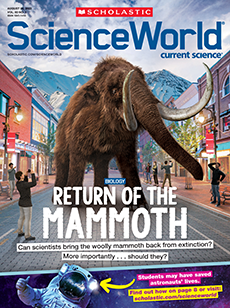It was Friday evening, and Stella the dog was at home with her owner, Christina Hunger. The pup was eagerly waiting for Hunger’s husband, Jake, to come back from work. Suddenly, Stella heard the rumble of a car engine in the driveway. But instead of heading for the door to greet her human pal, Stella ran to a board on the floor near the house’s entryway. The excited pup pressed two of the board’s colorful buttons with her paw. “Jake. Outside.” said an electronic voice. Stella was letting everyone know Jake was home!
It was Friday evening. Stella the dog was at home with her owner, Christina Hunger. The pup was eagerly waiting for Hunger’s husband, Jake. He was on his way home from work.
Suddenly, Stella heard a car engine rumble in the driveway. But she didn’t head for the door to greet her human pal. Instead, the excited pup ran to a board on the floor near the house’s entrance. The board had colorful buttons. Stella pressed two of them with her paw. “Jake. Outside,” said an electronic voice. Stella was letting everyone know Jake was home!

